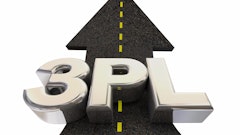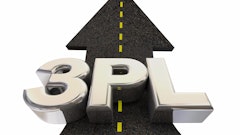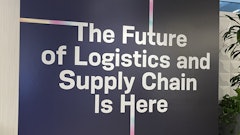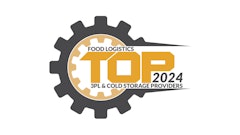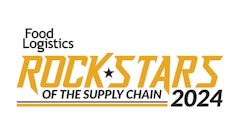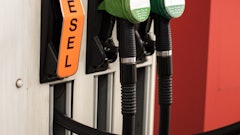
When the pandemic sent the world to a standstill, people turned to new hobbies and interests as they adjusted to more time at home. Some turned to music and record collections, others to jigsaw puzzles or kitchen pursuits. Amateur bakers double-downed on the dough and sent active dry yeast sales into the stratosphere -- one four-week period from spring 2020 saw a 410% increase in year-over-year sales, according to Nielsen.
Despite a decades-long decline in consumer demand for yeast, the pandemic changed consumer habits. Grocers and retailers facing holiday demand stockpiled yeast products. Eight months later, over half of retail buyers reported sourcing yeast was challenging. In response, bakers bought in bulk; 88% bought double or triple their anticipated needs. At the end of 2021, nearly 70% of home-based bakers expected to bake more than they did before COVID-19.
The flour and yeast industry couldn’t anticipate changes caused by a global pandemic and consumer behavior changes. Yeast producers were initially unable to meet exponential demand. But they adapted. Then, in 2022, the pandemic yeast shortage was over, and companies were back to more accurately predicting global demand.
The yeast shortage caused by changes in customer behavior underscores the importance of demand planning in logistics. Consider the underlying issues and best practices for avoiding problems in your supply chain.
Demand planning is essential in any industry
Demand planning in supply chain management attempts to predict future consumer product demand, relying on quantitative elements such as historical data on buying patterns and infusing that information with a bit of intuitive guesswork. One example is seasonality, when certain baking ingredients are more popular during certain times of the year, or even certain perishables, like turkey during the holidays and barbeque items in the summer.
Ideally, demand forecasting leads to the right amount of inventory: enough to meet consumer demand without having a surplus. Buying patterns are more nuanced and complicated to discern than simple winter vs. summer.
Best practices for demand planning
Demand planning drives profits and maintains customer satisfaction. It prevents stockouts and excess inventory, reduces backorders and positions businesses to meet customers’ ever-rising expectations. The world after COVID-19 forced even the largest corporations to confront how critical demand planning is to their brand reputation and the overall success of their businesses.
Even the most sophisticated retailers face post-pandemic inventory challenges. You can optimize demand planning and build flexibility for the unexpected with an intelligent strategy.
1. Ensure you can see inventory in real-time
The first step in demand planning is ensuring you can see real-time inventory data. Have total visibility into product movement by tracking and monitoring stock levels around the clock. These real-time insights are critical for guiding both inventory forecasting and production planning. Spreadsheets don’t work here. They are time-consuming, error-prone and often outdated (especially when analyzing the data).
2. Combine internal and external data
The next step is to collect all the relevant data you can use, both internal and external sources.
Internal data includes quantitative order history and product performance, as well as qualitative data from sales or marketing teams. These teams can highlight inventory metrics like turnover, conversions, stockout rates and order lead times.
External data includes market trends and patterns in consumer behavior from industry sources. Sources that can offer insight into industry metrics such as weekly updates on order volume trends from different marketplaces can help brands better understand fluctuations in marketplace sales in near real-time.
3. Analyze the data
There are a few key metrics to pay attention to as you analyze internal data, such as
● Sales numbers by channel
● Inventory turnover ratio
● Back-order rate
These metrics are the best representation of product movement and play an essential part in predicting demand.
If your brand experiences seasonality (periods of high and low demand throughout the year), you should note product performance for peak and off-peak months.
Analyzing internal and external data is the only way to gain critical insights that'll inform planning, purchasing and beyond. Don't forget the best demand planning software will complete this analysis for you.
4. Choose a demand forecasting method
The fourth step in the demand planning process is to choose a forecasting method. Generally speaking, forecasting methods fall into two categories: qualitative and quantitative.
Qualitative methods. A qualitative approach is used when brands don't have access to historical data. This might be because they're just starting out or because they've never prioritized their inventory records.
Either way, qualitative forecasting seeks the opinions of customers, salespeople and even industry experts to help predict future sales.
Common examples of qualitative demand forecasting include customer surveys, sales team surveys and the Delphi method (a method is a forecasting process framework based on the results of multiple rounds of questionnaires sent to a panel of experts).
Quantitative methods. Contrary to qualitative forecasting, quantitative demand forecasting relies on past data to predict future sales. Most quantitative methods use statistical forecasting models, meaning they leverage historical data to predict demand and inform supply chain planning mathematically. The more numerical data you have, the more accurate your quantitative predictions will be.
Common examples of quantitative demand forecasting include trend projection, seasonal index, naive method, straight-line method and moving average method.
5. Forecast demand and plan inventory
After selecting a forecasting method, it's time to forecast demand. Depending on the method you've chosen, this could look a lot of different ways.
If using the Delphi method, send out the first round of questionnaires to your panel of experts.
If using trend projection, look at the ebbs and flows of demand patterns (and then adjust for seasonality).
Be sure to challenge your own predictions. By challenging your forecasts or seeking a second opinion, you can eliminate outliers that might affect your predictions, for example, promotional events or pandemic bulk buying. With these outliers removed, you can improve your forecasting accuracy in a big way.
6. Measure the results of your demand planning
The final step in the demand planning process is to measure your results. How can you improve if you don’t know what went well or where you missed the mark?
With the help of key performance indicators (KPIs), you can assess the effectiveness of your business planning and figure out what changes are needed.
Some of the best KPIs for demand planning include inventory turnover ratio, order lead times, and forecasted sales (versus) actual sales you brought in. These metrics reveal how your products are moving and how customers behave and provide historical data you can use for future demand planning cycles.
Conclusion
Demand planning can make or break a business. A half-baked approach is guaranteed to fall flat. Transitioning much of the burden from manual processes to automated tools enables companies to pivot and adjust to the broader economy's known and new impacts. Technology can help avoid logistical pitfalls, opaque planning and weak inventory management from the most minor brands to the largest warehouses.








